Photo Theme: A smattering of Galapagos favorites...
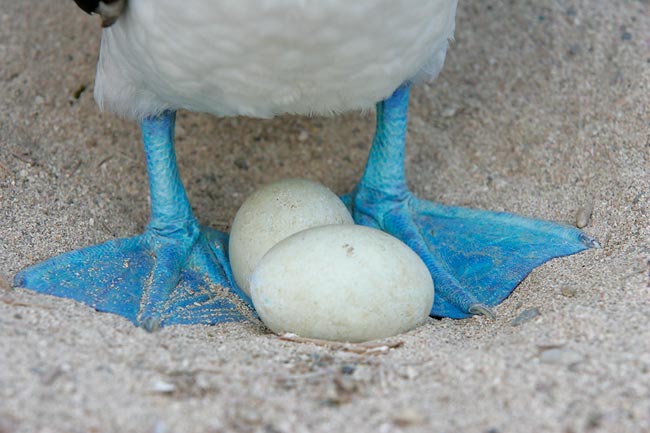
The 70-200 f/2.8 was an invaluable tool on this trip. I used it often both with and (as here) without the 1.4X II TC. This booby nest, photographed late on a cloudy afternoon, was on a path at Hood Island.
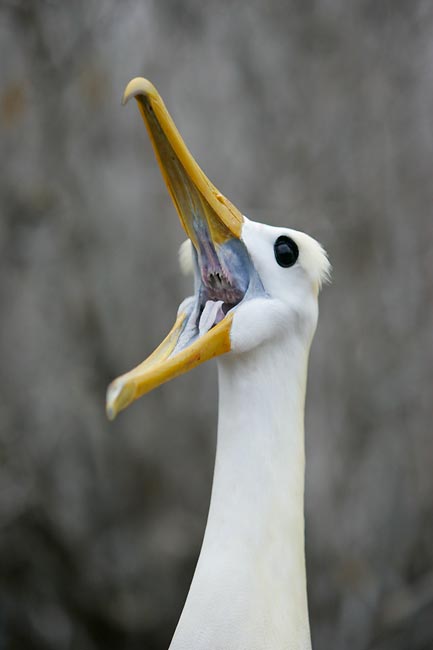
When using Canon teleconverters in situations where the system will not autofocus, for example, when using the 1.4X on the 400mm f/5.6 L lens with a 20D, or the 2X on that same lens with an EOS 1D Mark II, you can place a piece of tape over three of the pins in order to have the system autofocus. AF will be excruciatingly slow, but it will work. For more on this technique (including a rather poor photo), click here: http://www.fredmiranda.com/TipsPage/ Using a tripod with these slow combinations is of course highly recommended.
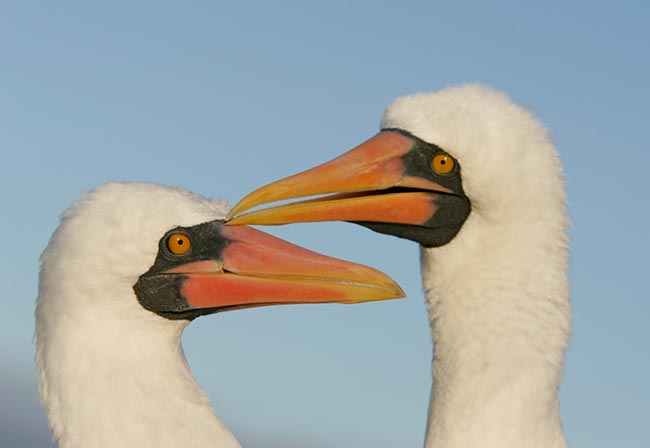
re:
PF: How about weight and size?
AM: This is a highly personal decision. My original Toshiba Satellite (5-205 S703, no longer in production) had a 12" X 9" screen that measured 15" diagonally and weighed 8 1/4 pounds. (All weights and measurements approximate.) This rugged machine has provided 2 1/2 years of great service. My second Toshiba Satellite (P-35 S-629) is a monster, with the 14 1/2" X 17" screen measuring 17" diagonally. It weighs 9 1/4 pounds. It is working out great for laying out and designing my latest book, "The Art of Bird Photography II" (which will be released on CD only in about a year). I would, however, recommend against a laptop this big for most traveling digital photographers. I have had a few problems with the new machine but, after a few visits by the in-home team, all is well. The P-35 performed flawlessly on the Galapagos trip. Do know that I travel with two laptops on all major trips... My friend Kay Kaylor purchased a P-35 at the same time I did and has not had any problems at all with her machine. Realize also that I am very rough on all of my equipment. I believe that all Toshiba laptop owners should purchase their Three- (or better yet, four-) year in-home service plus their System Guard protection. With System Guard physical damage caused by the user is covered. Another friend just purchased a Toshiba Satellite A-75-S213. The screen is 13" X 8 3/16", measures 15 1/4" diagonally, and weighs 7 3/4 lbs. I would highly recommend this model.
AM: The bigger and faster the machine the worse the battery life. The older the batteries the worse the performance.
PF: Is anything extra needed for downloading flash cards?
AM: All modern laptops include PCMCIA slots as standard. Then you will should purchase the Delkin BusCard 32 Adapter (http://www.birdsasart.com/delkin.htm#Delkin%20CardBus%2032%20Adapter)
PF: How about the hard drive?
AM: We recommend a hard drive of 80-100 gb.
PF: Can I get one in $1,000-2,000 range or do I need to spend a bit more?
AM: You will need to spend about $2500 for a quality machine with an upgrade to 2 gbs of ram. A slower but similar machine would have cost about $4500 two years ago. We use Dell in the office, but after having an all around horrific experience with Dell laptop that I purchased new, I tried Toshiba Satellites and have been extremely satisfied. Best, artie
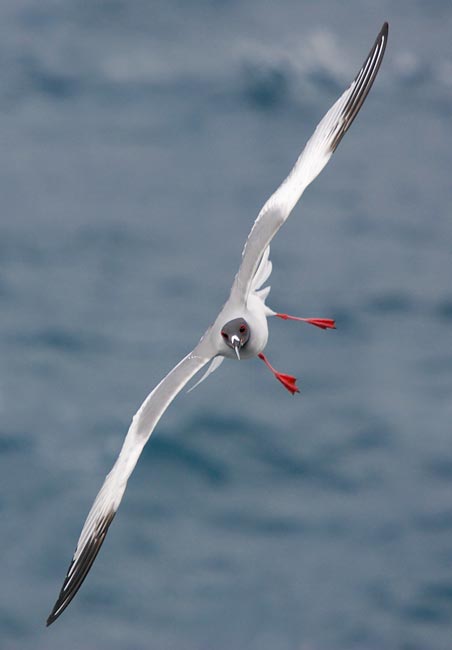

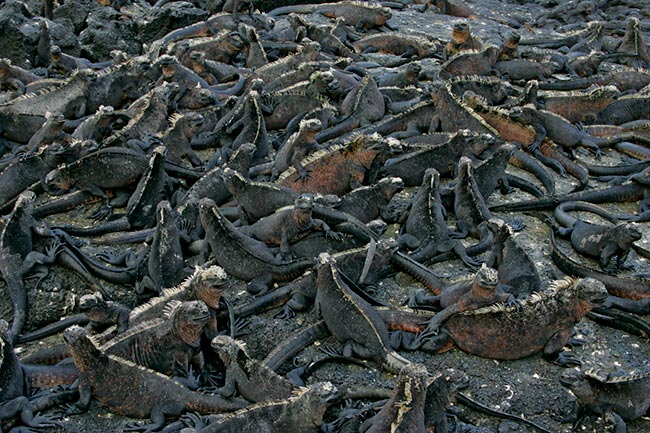
These seminars are for all nature photographers who want to learn how to make better images. I will describe the methods and techniques that I have developed and used since 1983. My comments on equipment (including and especially digital equipment), autofocus, light, composition and image design, and sharpness and my tips on getting close to wild subjects and photographing action and behavior will benefit everyone with a telephoto lens who wishes to dramatically improve the quality of their images. Since going all-digital in November 2002, I have--in short order--become a digital photography and Photoshop expert. My approach to optimizing images is to create a master file of excellent quality in the shortest possible time. I will share our workflow and numerous Digital and Photoshop tips during the Sunday sessions.
Weekend package (2 days): $159. Either Saturday or Sunday: $109. To register send a check for the full amount made out to "Arthur Morris" to PO Box 7245, Indian Lake Estates, FL 33855. We accept credit cards by phone: 863-692-0906. In either case, we need your e-mail address, your mailing address, and your daytime and evening phone numbers. Here is the Cancellation Policy for these events: Photo Road Show is relying on your attendance, so if for any reason you need to withdraw, please notify Arthur Morris as soon as possible. Once we receive written notice of your cancellation the following fees apply: cancel 31+ days prior to the start of the workshop and your fee will be refunded less a $50.00 cancellation fee; cancel less than 30 days prior to the date of the workshop and there will be no refund.
The Atlanta Venue is the Renaissance Waverly Hotel. There are no special rates available at this location which is currently sold out. Please e-mail us at birdsasart@verizon.net for a list of additional lodging options.
The Dallas venue will be announced in early August.
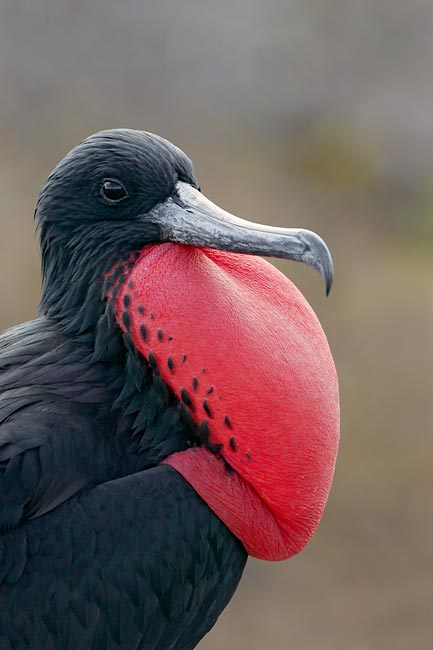
Magnificent Frigatebird, sac inflated, Galapagos Islands, Ecuador
Here are the tentative schedules:
SAT: Principles and Techniques for Successful Nature Photography
9:00 am: Welcome and Introduction
9:15 am: Putting Art in Your Nature Photography: Composition and Image Design
10:15 am: Break/Marketplace
10:30 am: Understanding and Using Natural Light
11:00 am: Tripods, Heads, Tripod Handling, Ground Pods, and Stalking Tips
11:30 am: Getting Close; 1,000 Ways to Skin the Cat
12:00 noon: Lunch/Break/Marketplace
1:30 pm: Choosing and using lenses
2:30 pm: Better Beamer and Flash set-up Demonstration
2:45 pm: Understanding .Flash as main light and Flash as fill
3:00pm: Break/Marketplace
3:30 pm: Capturing action and behavior (with more Autofocus tips)
4:00 pm: Image sharpness, Depth-of Field, Shutter Speed and ISO Choices,
4:15 pm: Door prizes/Break
5:00 pm: A Look at Some Recent Images
5:15 pm: Q&A/Closing
5:30 pm: The End
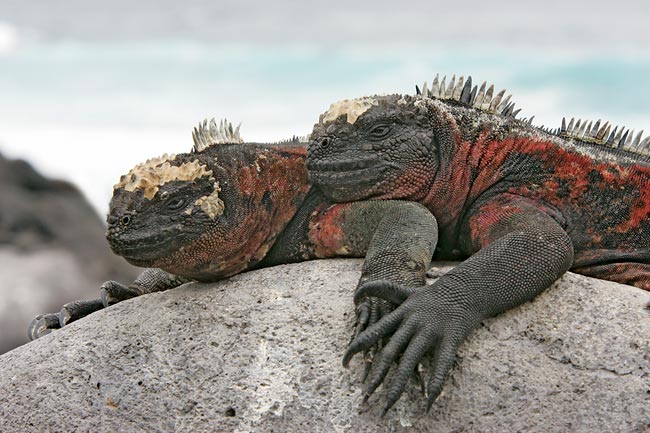
Marine Iguanas (in love???), Galapagos Islands, Ecuador
SUN: Digital Rocks! Digital Photography and Photoshop
9:00 am: Welcome and Introduction
9:15 am: Why Digital? (And Why Not?)
10:45 am: Break/Marketplace
11:15 am: Understanding, Evaluating, and Adjusting Histograms
11:45 am: Comments on Canon Digital Cameras
12:00 noon: Lunch/Break/Marketplace
1:30 pm: Creating Intentional Blurs, Zoom Blurs, and Flash Blurs.
2:00pm: Photoshop CS: the BIRDS AS ART Workflow.
3:00 pm: Break/Marketplace
3:30 pm: Downloader Pro, Breezebrowser Pro (Image Handling,
Editing, and Filing), and Pictures to Exe (slide program software!)
4:00 pm: Working with Selections in Photoshop
4:30 pm: Door prizes/Break
5:00 pm: A Look at Some New Images
5:15 pm: Q&A /Closing
5:30 pm: The End
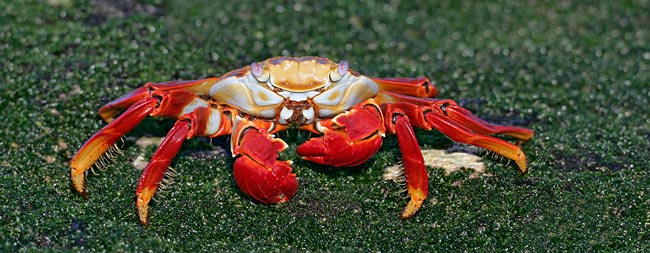
Artie
Note: Arthur Morris has been a Canon contract photographer since 1994 and continues in that role today. Hunt's Photo of Boston, MA is a BIRDS AS ART sponsor, as is Delkin Devices. Do feel free to forward this Bulletin to one or more photographer-friends. Those wishing to subscribe click here: mailto:http://birdsasart.us1.list-manage.com/subscribe?u=94ad23bd96f48a1de2ca612b3&id=bdb4a511a0?subject=subscribe To unsubscribe, click here: mailto:birdsasart@verizon.net?subject=unsubscribe. Back issues of all BAA Bulletins and relevant BAA Notes are archived on the web site at: http://www.birdsasart.com/bn.html